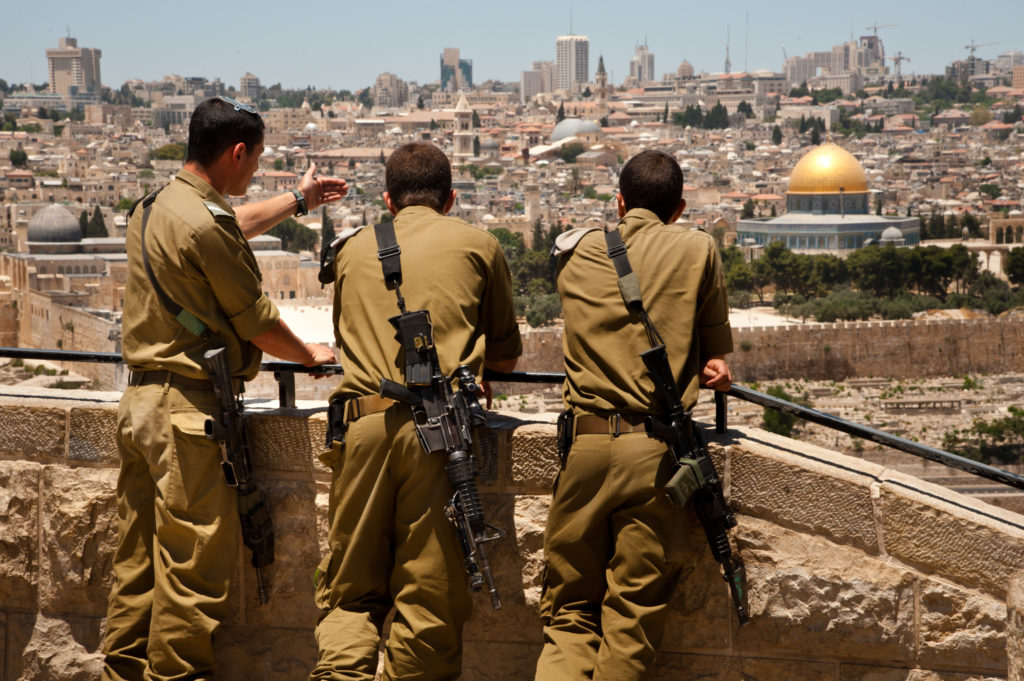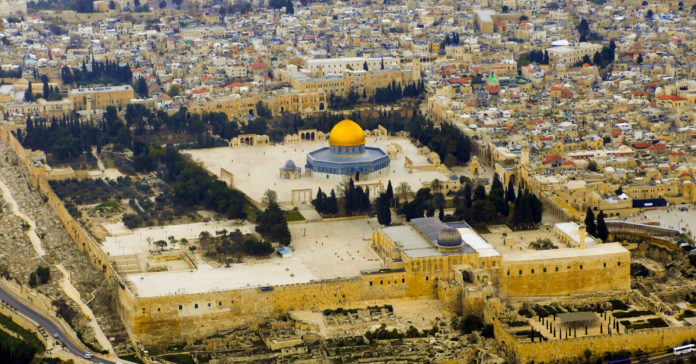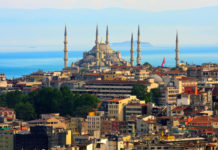With Masjid Al Aqsa under attack from the Israeli military and illegal settlers, we take a look at the history of Al-Aqsa and reveal the threats Palestinians say are facing the third holiest site in Islam from Zionist extremists and the Israeli state.
The Al-Aqsa sanctuary is the only mosque mentioned in the Qur’an aside from the Holy Kaa’ba, in the verse from Surah Al-Isra (the Night Journey).
“Exalted is He who took His Servant by night from al-Masjid al-Haram to al-Masjid al-Aqsa, whose surroundings We have blessed, to show him of Our signs. Indeed, He is the All-Hearing, the All-Seeing.” (Qur’an, 17:1)
For Muslims the Al-Aqsa sanctuary holds great importance – it was the first qiblah for the Muslim community and the only place where all the Messengers of Allah (peace be upon them) prayed together led by the Prophet Muhammed (pbuh).
The Al-Aqsa Mosque stands in Al-Quds (Jerusalem), a city of deep religious significance to Muslims. It is located in the old part of the city accessible through the Damascus gate which was built in its current form by the Ottoman ruler Suleiman the Magnificent, also known as Suleiman the Lawgiver, in 1537.
Masjid Al-Aqsa is actually an area of about 35 acres, known in Arabic as Al-Haram-al-Sharif (the Noble Sanctuary). It contains several structures of immense religious and historical importance to Muslims.
For example, it houses the famous golden domed mosque, the Qubbatus Sakhra or the Dome of the Rock, which contains the sacred rock from which Prophet Muhammed (peace be upon him) ascended to heaven with Angel Jibreel (peace be upon him) during the Al Isra or Night Journey.
Subscribe to our newsletter and stay updated on the latest news and updates from around the Muslim world!
The Dome of the Rock was built by Caliph Umayyah Abdul Malik ibn Marwan between 688 to 691 AD. The original mosque was most likely made of wood with a metal covered dome, and it was almost a thousand years later that the gold covered dome and beautiful ceramic tiles were added by Suleiman the Magnificent.
Umayyah Abdul Malik ibn Marwan also constructed the adjacent smaller Dome of the Chain to mark the central spot of the Al Aqsa sanctuary.
Meanwhile, the silver domed mosque in the compound is Masjid Al-Qibly, which marks the direction of prayer as its front façade directly faces the Holy Kaa’ba in Makkah. It is sometimes referred to erroneously as Masjid Al-Aqsa, but it is important to note that Al-Aqsa refers to the entire area and not just this single mosque.
Masjid Al-Qibly’s first construction took place under Umar the second Caliph of Islam (may Allah be pleased with him). Under Roman rule the sanctuary was a dumping ground and full of filth. Umar (may Allah be pleased with him) entered the Al-Aqsa sanctuary to find it covered in rubbish and began to clear it with his bare hands. Locals joined him and Umar declared a mosque should be constructed there. Within Masjid Al-Qibly lies a small room, the Masjid Al-Umar, named in his honour and thought to mark where he began cleaning the sanctuary.

Many years later, following the occupation of the mosque by the invading Crusaders, it was restored by Salahuddin Ayubi and has undergone further alterations with its present structure thought to date from the 11th century AD.
The Buraq Wall (Western or Wailing wall) is along the western side of the Al-Aqsa sanctuary and is named after the animal the Prophet Muhammed (peace be upon him) rode from Makkah to Jerusalem. Masjid Al-Buraq is a small structure in the south western corner of the Al-Aqsa sanctuary indicating the actual point where the Prophet tied the Buraq. The Moroccan Gate is next to the Masjid Al-Buraq, where Prophet Muhammad (pbuh) entered during the Al Isra.
Just outside the eastern wall of the sanctuary lies the Bab ur Rahmah cemetery where two Sahaba – Ubadah bin Samit and Shaddad bin Aus (peace be upon them) – are buried. Significantly, many Messengers of Allah and Sahaba are buried within the Al-Aqsa sanctuary itself.
Finally, underneath the paved courtyard of the sanctuary lies a vast underground complex constructed in the 8th century AD under Umayyad rule. This is the Musallah Marwani where Prophet Isa (peace be upon him) spent his infancy with his mother Maryam (peace be upon her).
Attacks on Al-Aqsa
Al-Aqsa has suffered many attacks and natural disasters over its long history. For instance, Masjid Al-Qibly was destroyed by a series of earthquakes and used as a palace and stables under the Crusader occupation in the 12th century whilst they converted the Dome of the Rock into a church.
But within living memory, the most serious assault on the Masjid Al-Qibly was a fire started by an evangelical Australian Christian Zionist in 1969.
Panic-stricken Palestinians rushed to the site carrying water to put out the fire and save precious antiquities in the mosque. According to Palestinian accounts, fire brigades were called but the occupying Israeli army refused to let the fire engines from across the West Bank enter.
They say protests by Palestinians, both Christian and Muslim, forced them to eventually allow the fire brigades to enter. Yet sadly many important artefacts had already perished including the 1,000 year old minbar constructed in the time of Salahuddin Ayubi.
“I still remember the fire as if it happened yesterday, the moment the people of Jerusalem heard about the fire, they rushed in, bringing water inside cans to put out the blaze,” said Sheikh Ekrema Sabri, the Head of the Supreme Islamic Council and former preacher of Al-Aqsa.

It should be noted that Israelis dispute this account. They say the claim that Israeli authorities tried to prevent efforts to put out the fire is a libel that is based on zero evidence. And indeed Israel firefighters did put out the blaze.
The arsonist himself believed that the destruction of the mosque would hasten the building of the Third Jewish Temple on the site and herald the second coming of Isa (pbuh).
Jews refer to the Al-Aqsa sanctuary as the Temple Mount, believing it to be the site on which the first and second Jewish temples stood in the Biblical era. Under Jewish law the site is considered too holy for Jews to walk upon and officially the Israeli state bans Jews from entering the sanctuary.
Since the illegal occupation of Jerusalem in 1967, the Israeli state (which effectively controls access to Al-Aqsa) has commenced numerous excavations alongside the walls of the compound, thought to be the starting points of tunnels under the sanctuary.
And there is a growing “Temple Mount” movement amongst Zionist Jews. Once considered of little influence on Israeli politics, their demands for Jewish access and the right to worship at Al-Aqsa are now increasingly being listened to by the right-wing Israeli government. Numerous incursions by Zionist Jews are occurring weekly under the watch and sanction of the Israeli state.
Moreover, over the past decade Israel has constructed a series of tunnels in the occupied Palestinian neighbourhood of Silwan in East Jerusalem, south of Al-Aqsa. It has forcibly evicted Palestinians from the area as part of the Kedem colonial settlement project and many fear the tunnels are part of a strategy to weaken the foundations of Al Aqsa and provide a means of access for the Zionist colonists.
In 2020 it was revealed the businessman and owner of Chelsea Football club, Roman Abramovich, had given almost 100m dollars to fund settler colonist organisations responsible for the forced removal of Palestinians from East Jerusalem.
So the reality is that Al-Aqsa remains under attack and under threat, yet its history shows that it has survived natural as well as man-made disasters. The third holiest site in Islam has risen literally from the ashes and ruins to be rebuilt and restored but whilst it is at risk Muslims worldwide must do everything they can to safeguard its future.























